Walter Isaacson: On a hot August afternoon in 1987, the after work crowd is converging on a neighborhood pub in Leicester, England. A woman sits with a back to a nearby table where a group of young men chat loudly. Though she wasn’t trying to eavesdrop something catches your ear. One of the men is sharing an odd secret. He just confessed to his friends that he had faked a blood test intended to be used to solve a murder.
Blood tests were all the talk in Leicester that summer. Within the last four years to local teenage girls had been found sexually assaulted and murdered. The police’s number one suspect. Richard Buckland, a 17 year old who, under intense questioning, admitted to one murder but not the other. And with the hope of pinning the second murder on Richard too, the police, reached out to a researcher at the University of Leicester would recently developed a system of genetic coding known as DNA.
The plan was simple. They were going to take samples, found in evidence and compare them against samples taken from their 17 year old suspect. And when the results came back from the lab, the investigators were shocked. The tests confirmed that the crimes were in fact committed by the same person, but that person was not Richard Buckland, who would go onto become the first suspect ever exonerated through DNA evidence. Following a police appeal, 5000 local men volunteered blood or saliva samples, but none matched those held in evidence.
As a woman in the bar listened, the man continued. He had offered his blood sample at a friend’s urging. The friend had been arrested previously and now feared even more scrutiny from the police. So as a favor, the man had showed up at the police station in his friend’s place and provided a blood sample in his friend’s name.
The woman waited a few minutes, her heart pounding. And then as casually as she could, she left the pub. She knew she needed to get to a phone fast.
Audio Recording: 999, what’s your emergency please?
Walter Isaacson: The information she was about to report would go on to be incredibly important because for the first time in history, DNA evidence would be the decisive factor in solving a murder. It was a first in a series of cases that would disrupt, dismantle and ultimately reshape a century of forensic crime investigation. Exonerating the wrongly convicted, solving generations old cold cases, and as you’re about to hear, rewrite a century of assumptions.
I’m Walter Isaacson and this is Trailblazers, an original podcast from Dell Technologies.
Audio Recordings: Evidence, the key figure in the investigation of an involved crime. Robbery or murder, another job for the police such as leaving a fingerprint or signs of forcible entry. Within three days the culprit was apprehended. I guess you won’t steal any more automobiles, will you?
Walter Isaacson: A postscript to that conversation overheard in the pub 30 years ago. Once tipped off, police questioned a man named Colin Pitchfork, a Leicester baker who had coaxed his friend and to helping them fake the blood test. When the police got a genuine sample from Pitchfork, they found it match those from the crime scene. Colin Pitchfork was tried sentence alive and bore the dubious distinction of being the first murderer to begin evicted using DNA evidence.
Forensics was about to undergo a major disruption and so was the popular attitude towards forensics, an attitude rooted in what many call the CSI effect. In the cool blue light of prime time television, forensic investigation is simple. Scan of bio sample at the crime scene against the bio sample of the suspect. Tap a couple of keys on the keyboard and it’s a match. In this world there isn’t a crime that can’t be solved in 42 minutes, give or take a few commercial breaks.
As the Colin Pitchfork case illustrates, modern forensics are indispensable to crime investigation. But the century old story of forensics is marked by more than its share of trial and error. The use of fingerprints is ancient.The Babylonians used them to seal contracts, as did ancient Chinese societies. But until the 19th century few saw the need for fingerprint identification. In the world prior to the Industrial Revolution, towns and villages were small and unfamiliar faces were rare. There’s little need for identification when everyone knows each other.
In the 19th century, however, that began to change. Jennifer Mnookin is Dean of the UCLA School of Law.
Jennifer Mnookin: Handwriting identification began in the 19th century, partly because of bank clerks who were having to make identifications about checks in circumstances when we weren’t operating in such a face to face society anymore.
Walter Isaacson: Meanwhile, British courts began taking a criminal’s prior crimes into account before sentencing. But it wasn’t long before criminals devised a work around. They gave false names to prevent the courts from tying them to the past misdeeds. Police countered this by keeping fingerprint records to help identify repeat offenders. But keeping fingerprint wasn’t enough. Police also needed a system for reading them, so British and French authorities began developing systems for identifying matches. At this point, fingerprinting was yet to play a major role in crime investigation. That all change with the case of a sensational murder thousands of miles across the Atlantic.
In the late spring of 1892 in the seaside town of Necochea Argentina, the unthinkable happened. Two children were found murdered in that mother wounded. The mother told police that the attacker was a neighbor whose marriage proposal she had spurned. The neighbor was promptly arrested, but when police learned he had a solid alibi, the investigation stalled. They needed help so they called in Edward Alvarez, a police inspector from La Plata some 300 miles away.
Alvarez spent hours studying the crime scene before he found what he was looking for, a thumbprint on a smear of blood on the door. It so happened that a colleague in La Plata, Juan Vucetich was a pioneer in the study of fingerprint investigation. He had shared with Alvarez a system of classification in a manner that team to provide an impressive degree of certainty. As the investigation drew on Alvarez’s attention turned to the mother. He learned that she had been in love with another man who refused to marry her because he didn’t want the burden of her children. Suspicion grew that she had committed the crime in order to marry her suitor.
Comparing the blood smear print to a sample taken from the mother. Alvarez saw he had a match, evidence that contradicted the woman’s story that she hadn’t made contact with any blood at the scene. Confronted with this evidence, the woman broke down and confessed to the crime. The case would become the first murder to be solved to fingerprint evidence.
As millions of readers consume the works of Mark Twain, Arthur Conan Doyle and a growing army of crime fiction writers, police forensics found a home in the popular imagination. In addition to fingerprints and handwriting analysis, new forensic disciplines emerged. Evidence soon, extended to footprint impressions, tire marks, hair and fiber samples and blood spatters. These spawned a new player in the criminal courts, the forensic expert whose testimony was readily taken as gospel. Jennifer Mnookin.
Jennifer Mnookin: There was a tremendous willingness on the part of the courts to let the experts testify and the experts got very good at testifying in ways that were persuasive to lay fact finders. If we look back to the early history of forensic science, one of the striking things is how willing courts were to accept these new kinds of expertise. There was very little challenge.
Walter Isaacson: Former FBI agent Frederic Whitehurst spent a dozen years in the crime lab before blowing the whistle on some of the bureau’s forensic practices.
Fred Whitehurst: Well, if a prosecutor trying to to impress the jury that everyone believes in this guilt that he calls on an FBI agent. The FBI agent may have very little to say, but he’s sitting up there on the stand, on the prosecutor’s side and he’s agreeing with some point and he’s very well trained. He’s got a big gun on his hip and he’s got the right suit and the right time. People just didn’t question back then forensic science. The implications of that are that very maybe too often as opposed to very often, very too often the trier of fact, the jurors, the court were manipulated, not educated concerning the data.
Walter Isaacson: The trouble wasn’t that forensic methods weren’t often effective. It was that they weren’t often founded on scientific practices.
Jennifer Mnookin: I don’t want to condemn the people who were inventing these techniques or trying to make use of them. They were trying to learn more about the world in order to try to solve crimes. I mean, they had good intentions, but the courtroom didn’t turn out to be a very effective space for testing the limits of these sciences or making sure that we were going to work to understand weaknesses as well as strengths.
Walter Isaacson: Frederic Whitehurst.
Frederic Whitehurst: Many of the people that I worked with had no training in science whatsoever. Mathematicians, history majors, political science majors. They weren’t physical scientists. Some of them were social scientists. We did have scientists on board. There were a couple of degree scientists beside myself. But by and large, if, if, if you gave the right answer, to the right question at the right time to have the right guy, you got the right job.
Jennifer Mnookin: These techniques got grandfathered. For a long time nobody thought to really look hard at whether some of these techniques were actually less valid than we’d been claiming for decades. And frankly, all the defense lawyers who hadn’t dug in and really focused on endeavoring to challenge them, they they just got accepted for a very long time and without question.
Walter Isaacson: Along the way, another preconception crept in that a forensic expert was strictly an agent of the prosecution.
Frederic Whitehurst: If the FBI was coming into court to talk for 30 minutes, it meant they were on the prosecutor’s team and woe be unto the individual who was going to testify for the defense. It wasn’t a very popular position.
Walter Isaacson: In 1992 when DNA testing was relatively new. New Yorkers, Barry Scheck and Peter Neufeld, who met while serving as public defenders in the 1970s founded The Innocence Project. They reasoned that if DNA evidence could prove people guilty of crimes, it could also be used to prove the innocence of the wrongly convicted. According to The Innocence Project website, DNA testing has produced over 350 exonerees today, several of whom had served time on death row. Though many of the cases were based on errors and testimony, in 2015 Neufeld told the Irish Times that 50% of wrongful convictions in the US resulted from a misapplication of forensic science.
Yet, it wasn’t The Innocence Project that would inspire a full throated call for higher uniform standards in forensic science. It would begin instead with the events of March 11th, 2004.
That morning in Spain, a series of bombs on Madrid’s commuter train system killed a 191 people. Nearly 2000 were injured. The investigation pointed to Islamic militants, sympathetic to al Qaeda. 5400 miles away in Portland, Oregon Brandon Mayfield, a civil rights lawyer and former Patriot missile platoon leader, remembers watching the news coverage with his wife.
Brandon Mayfield: I came home and I remember seeing it on TV. Some people thought it was a Spanish nationals, maybe it was Muslims, so these initial reports were coming in. So I was saying, I don’t know who these people are, but whoever they are, they’re criminals of the first order and there’s absolutely no justification for this type of bombing. That was my feeling.
Walter Isaacson: On a Thursday morning, exactly eight weeks to the day after the Madrid bombing. Mayfield dropped his kids off at school.
Brandon Mayfield: Maybe I arrived at the office around 9:00, 9:30. I was working on this personal injury case, had files on my desk, heard a knock on the door. I don’t usually get knocks on the door because most of my clients will come by appointment. I didn’t know who it was. I answered the door and I saw a man and a woman, black suits. Quickly they made it clear that they were agents of the FBI. They said they wanted to talk to me.
Walter Isaacson: Mayfield has captured the events that followed in a book, Improbable Cause, the War on Terror’s Assault on the Bill of Rights, co-written with his daughter Sharia. Fingerprints identified as his had been found on a bag of detonators near the bombings. Newsweek quoted a counter terrorism official as saying that the lone fingerprint was an absolute, incontrovertible match. Brought before a judge in handcuffs, leg irons and a belly chain, Mayfield learned the US Attorney’s Office had enough to indict him but didn’t yet have enough to convict.
Brandon Mayfield: In other words, they were continuing to try to build this case against me, which was a crime punishable by death. There was a real fear that I could potentially be taken to Guantanamo Bay.
Walter Isaacson: Mayfield flatly denied that the fingerprint found in Spain belonged to him. At the time of the bombings, Mayfield’s passport was expired, making travel almost impossible. And besides, he had never in his life even been to Spain. But even in the face of such a strong alibi, he found that even his own lawyers doubted his story.
Brandon Mayfield: These fingerprint identifications were so strong, there’s such a presumption of validity that even Steve Wax, the head of the federal public defender’s office and Chris Shaw, a very experienced federal public defender at the time, they initially thought that those fingerprints were mine. the time they thought that those fingerprints were mine.
Walter Isaacson: Only through the work of Spanish investigators did Mayfield receive the news he had been waiting for.
Brandon Mayfield: Spanish police had found this individual, an Algerian by the name of Diaoud Ounani that they believed that was a match to the fingerprints found on the bag and not mine, and yet it was still their, even in light of this, it was still their opinion that it a match to me, that my fingerprints were a match. But in light of the situation that they would move from my release with the exception that there I would have some constraints on my freedom such that you would be house arrest and I would be monitored at home.
Walter Isaacson: His name finally cleared, Brandon Mayfield successfully sued the US government for civil rights violation. And the government provided both an apology and a $2,000,000 settlement.
Walter Isaacson: Jennifer Mnookin.
Jennifer Mnookin: Prior to Brandon Mayfield’s mistaken fingerprint identification, when there was a mistake in the fingerprint community, they tend to explain it away as a bad apple. They tended to say, oh, this examiner wasn’t competent, or this examiner was corrupt, or this examiner must’ve been having just an inexcusably bad day.
Walter Isaacson: Former FBI crime specialists, Frederic Whitehurst.
Frederic Whitehurst: I know that six fingerprint examiners determined that those were his fingerprints, but they weren’t. And those folks kind of shook up the FBI because at that time, you know fingerprints were one of the golden standards of forensic science
Walter Isaacson: For the first time, serious questions swirled around a century of fingerprinting practices.
Walter Isaacson: At a conference in London in October, 2005 psychologist Itiel Dror shared the results of a study conducted in collaboration with the student, David Charlton, at the University of Southampton. The subjects were professional fingerprint examiners, all well versed in the Mayfield case. Each was shown pictures of two fingerprints samples. They were told one belonged to Brandon Mayfield and the other was the one taken from the scene of the Madrid bombings. They were asked to compare the two and explain how the FBI examiners got it wrong.
One examiner said simply that he could not confirm that the prints matched. Three confirmed that the print did not match and proceeded to explain why. A fifth examiner was bold enough to insist that the prints did match, despite his knowledge of the Mayfield case. And he was right.
The prints weren’t from the Mayfield case at all. Each examiner was given prints from a case they themselves had worked. In each case, they had testified in court that the prints were a match. But here, in the context of the Mayfield case, an examiner who had been certain in court was now uncertain. And three reversed their opinions completely. By now it was clear. Forensic science needed fixing.
In 2009, the National Academy of Science issued a major report on forensic practices titled Strengthening Forensic Science in the United States. Some of its key findings were a century in the making. It called for certification and accreditation of forensic professionals, for standardization of procedures and for more and better research. Above all, it called for hard science and forensic investigation. It’s key recommendation was for the creation of a federal administration and advisory body called the National Institute of Forensic Science. Nine years later, that proposal has yet to find traction.
Jennifer Mnookin.
Jennifer Mnookin: The 2009 NAS report was both a watershed event and changed less than it should have. On the one hand, it brought tremendous attention to this set of questions and it shook up a variety of participants within our criminal justice system, from forensic scientists to judges to lawyers. It’s been one of the most downloaded reports of all time among National Academy reports. It got a lot of press attention. It certainly focused considerable attention on this really important set of issues.
Walter Isaacson: One of those issues with the practice of hair analysis, which fell under a barrage of criticism in the DNA era.
Walter Isaacson: Frederic Whitehurst.
Frederic Whitehurst: In April 2015, the FBI finally had to admit that 26 of 28 FBI hair examiners at given false and misleading testimony 95% of the time in trials over a 30 year period of time. Our response could be, well, they were using the science as it existed then and there’s no validity to that statement, there just isn’t. The pressures on all of us were tremendous to go along with the prosecution.
Walter Isaacson: It was hair analysis that made an unwitting trailblazer of Santae Tribble. In 2012, Tribble was exonerated by DNA evidence after serving 28 years in prison. At his trial analysts testified that his hair was a match with 13 hairs founded the crime scene. Later DNA testing revealed that those 13 hairs belonged to three other people and a dog.
Walter Isaacson: In the wake of a growing number of wrongful convictions and prompted in part by whistleblowers, positive changes have found their way into police forensics.
Frederic Whitehurst.
Frederic Whitehurst: The FBI now has established published protocols. They are going through the process of validating those protocols. They are now employing physical scientists as opposed to social scientists. They’ve put the laboratory down in Quantico, Virginia. Their examiners, their analysts are allowed to write their own reports rather than have a law enforcement officer come in and paraphrase what the scientists were saying. My feeling, and I continue to look at FBI laboratory work product, they are light years ahead of where they were when I was there, light years. They still have things to fix, they still don’t understand very well validation, but there is an effort. It’s happening.
Walter Isaacson: 30 years of disruption in police forensics has lead to a growth in new research and techniques. At Sheffield Hallam University in England, researchers are using technology to improve fingerprint analysis by using the physical evidence to create a more detailed suspect profile. The team here is seeking ways to reveal biometric information based on the sweat that creates fingerprints. By analyzing the molecular makeup of the fingerprint, it could show if somebody has made contact with hair gel, suntan lotion or drugs. Ultimately, it could provide clues about gender and age or identify hemoglobin unique to just 2% of the population.
The researchers behind these bold new technologies will very likely rise to become the champions of modern forensics. They promise to give a glimpse into crime solving never before thought possible. But despite being a science, history has shown us that forensics is certainly an imperfect one.
We can never forget about the wrongly accused that forensic experts seemed certain would guilty. The Brandon Mayfields, the Richard Bucklands, the Santae Tribbles. All people whose stories help keep the CSI in check and inspire the drive to fortify the science in police forensics.
I’m Walter Isaacson, and this is Trailblazers, an original podcast from Dell Technologies. We’ll be taking a break for the holidays, but we’ll be back in the new year with all new episodes of the podcast. Until then, thanks for listening.
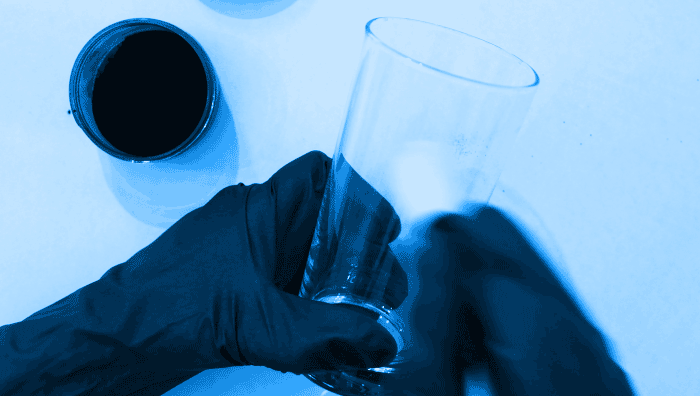 The case for forensics.
The case for forensics.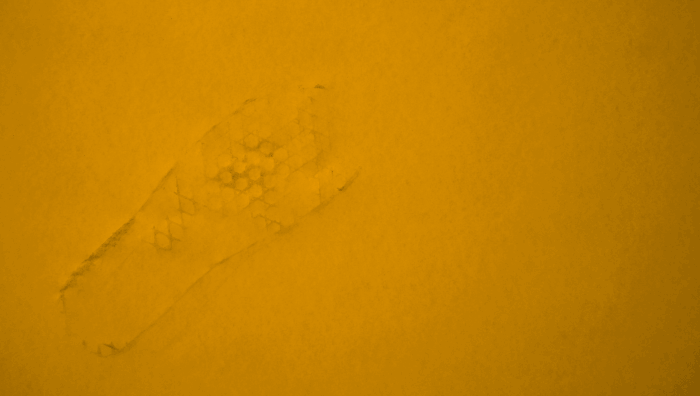 These are their stories.
These are their stories.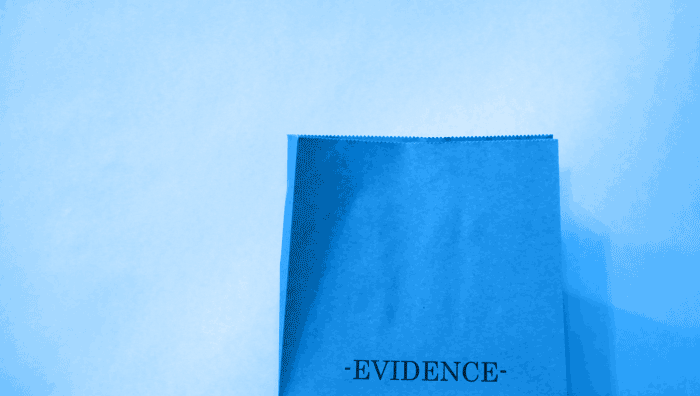 Striving for perfection.
Striving for perfection.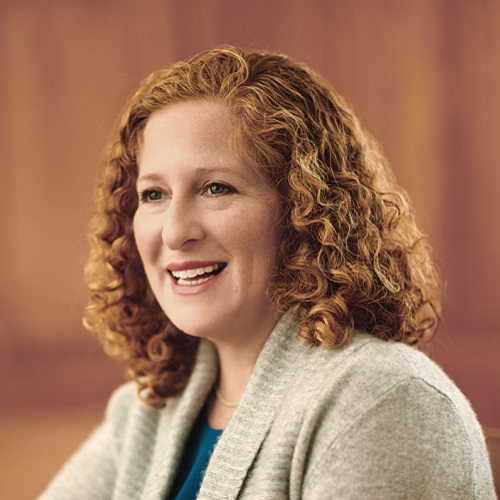 Jennifer Mnookin
is the Dean at UCLA School of Law. Her academic specialty is scientific and forensic evidence with a focus on fingerprint identification.
Jennifer Mnookin
is the Dean at UCLA School of Law. Her academic specialty is scientific and forensic evidence with a focus on fingerprint identification.
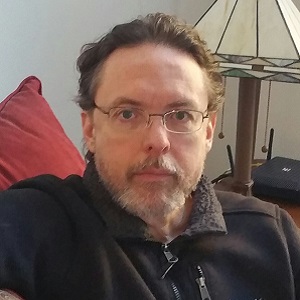 Brandon Mayfield
is an Oregon attorney who was falsely charged with the Madrid train bombings in 2004. He’s also co-author of Improbable Cause: The War on Terror's Assault on the Bill of Rights.
Brandon Mayfield
is an Oregon attorney who was falsely charged with the Madrid train bombings in 2004. He’s also co-author of Improbable Cause: The War on Terror's Assault on the Bill of Rights.
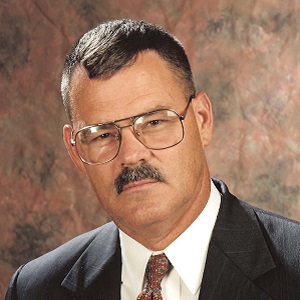 Frederick Whitehurst
worked at the FBI crime lab and blew the whistle on misconduct within the FBI crime lab, resulting in extensive reforms. Today he’s an attorney and forensic consultant.
Frederick Whitehurst
worked at the FBI crime lab and blew the whistle on misconduct within the FBI crime lab, resulting in extensive reforms. Today he’s an attorney and forensic consultant.